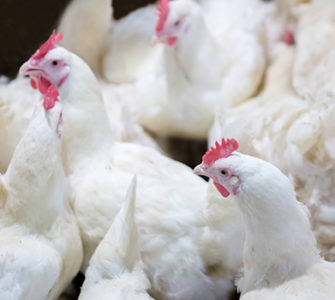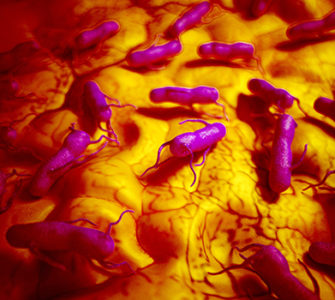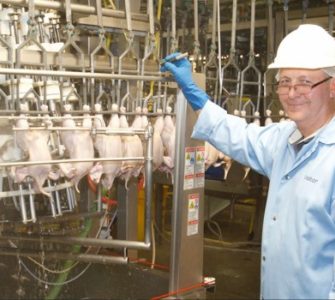Vaccination of broilers ‘quick and easy’ way to get Salmonella under control
Vaccination of broilers against Salmonella may be the best and most expedient option for producers struggling to meet USDA performance standards at the processing plant, said Chuck Hofacre, DVM, PhD, president of the Southern Poultry Research Group Inc., Athens, Georgia.
Hofacre also recommended vaccinating broilers against Salmonella if producers have breeders shedding the types of Salmonella that pose a risk to human health, which could lead to salmonellosis in people and a recall — at least until Salmonella in breeders is under control.
“Salmonella Enteritidis, Heidelberg and Typhimurium are the ‘big three’ that can cause human foodborne illness. If you have one of those three…one of the quicker ways we can intervene to reduce that is to use a live Salmonella vaccine [in broilers],” he told Poultry Health Today.
The level of Salmonella coming into the processing plant is what dictates the plant’s success meeting USDA performance standards. If a particular complex or group of breeders is shedding Salmonella, their broilers will potentially have a higher level of the pathogen, posing a risk to human health, Hofacre continued.
‘Good protection’
The live vaccines are all Typhimurium based and give good immunity protection to broilers, especially against the big three types of foodborne Salmonella, continued Hofacre, a professor emeritus, University of Georgia. The vaccines are generally administered at day-of-age followed by a booster dose again at 10 or 14 days of age, he said.
The risk for Salmonella tends to be greater on large farms with all breeders in the same place compared to farms with only one or two breeder houses. The vectors of Salmonella, which include beetles, mice and people, tend to drag the pathogen around more into breeder houses, which means there’s a larger amount of Salmonella that makes its way to the broiler operation, Hofacre noted.
Need live-side help
Since USDA tightened the performance standards for Salmonella as well as Campylobacter, processing plants aren’t able to control these foodborne pathogens as they did in the past. They need live production to lower the amount coming into the plant, he said.
Vaccination is “quicker and easier” than other Salmonella-control options, but producers may also want to consider using probiotics, organic acids and some of the plant-based essential oils that have an anti-Salmonella effect. These types of products are used in antibiotic-free production to control Salmonella but may benefit conventional flocks too, Hofacre indicated.
Feed isn’t a big source of Salmonella, in his experience. At companies he’s worked with that had a Salmonella problem, feed may have been what initially introduced the pathogen to breeders, but generally it’s not feed that maintains Salmonella or is responsible for it reaching broilers.
Posted on January 24, 2019

















